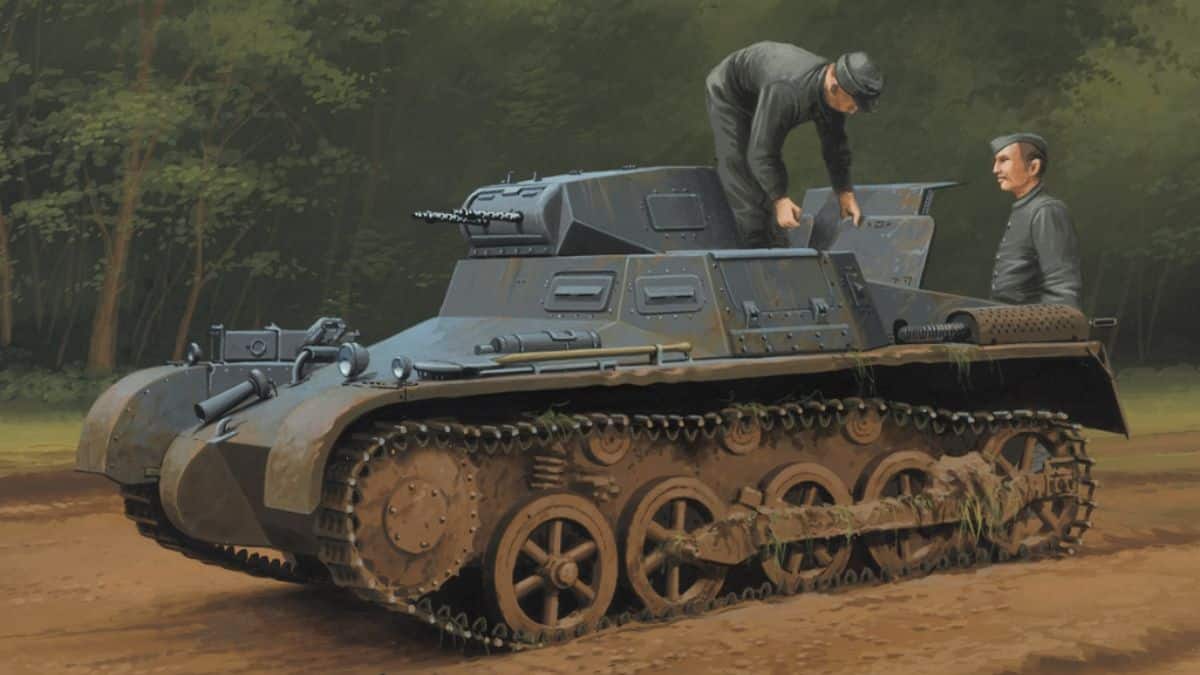
The German phrase Panzerkampfwagen I, or PzKpfw I, is where the name Panzer I, a light tank produced by Nazi Germany in the 1930s, originates. This tank was first designed in 1932 and went into mass production in 1934. It was officially known as Sd.Kfz. 101, which stands for “special purpose vehicle 101” in the German ordnance inventory. The Panzer I was an essential part of Germany’s armoured troops in the early phases of World War II and played a significant role in those attempts.
Specifications:
This particular vehicle is a military tank that has the following dimensions: 4.02 metres (13 feet 2 inches) in length, 2.06 metres (6 feet 9 inches) in width, and 1.72 metres (5 feet 8 inches) in height. Its mass is 5.4 tonnes (6.0 short tonnes). A driver and a commander make up the two-person crew that is intended to operate it. The thickness of the tank’s armour varies from 7 to 13 millimetres. The tank is equipped with two 7.92 mm MG 13 machine guns as its main armament. Its four-cylinder, air-cooled Krupp M 305 petrol engine produces 60 PS (59 hp, 44 kW). There is 11.1 PS (8.1 kW) per tonne of power to weight. One component that enhances the suspension system’s functionality is the quarter-elliptical leaf spring suspension.
Variants:
Many design changes were made to the Panzer I between 1934 and the middle of the 1940s, especially in the later years of its combat duty. Tank destroyers and other specialised modifications gave the Panzer I chassis a new lease on life, although it was rendered obsolete upon its introduction and could not compete with foreign armoured vehicles. One significant modification was the Kleiner Panzerbefehlswagen (“small armoured command vehicle”), which was built on the Ausf. A and Ausf. B chassis and produced in 200 pieces overall. Equipped with a 47 mm (1.85 in) Czech anti-tank gun, this tank marked a major development in the Panzer I ancestry and demonstrated the platform’s adaptability to a range of military missions.
Operations:
Developed by Germany in the interwar years, the Panzer I was a small tank that was crucial to numerous military operations both before and during World War II. As both the Republicans (Popular Front) and the Nationalists (Spanish Nationalist Front) got support from foreign nations, Panzer I was engaged in the 1936 Spanish Civil War that broke out on the Iberian Peninsula. A notable example of a proxy war was when the Soviet Union and Germany provided tanks to the opposing forces.
In 1937, roughly ten Panzer I Ausf. As were sold to the Republic of China and employed in the Battle of Nanjing against the Imperial Japanese Army. Subsequently, during the early stages of World War II in Europe, the Panzer I comprised the backbone of Germany’s armoured strength in campaigns such as the annexation of Austria in 1938 and the occupation of Czechoslovakia in 1938-1939. A substantial part of the 3,300 German tanks that were deployed during Operation Barbarossa, the invasion of the Soviet Union in 1941, was made up of Panzer I tanks. The tank performed well in a variety of terrains, particularly the rough terrain of Spain during the Civil War, the numerous settings in the European area, and the vast terrain of the Soviet Union during Operation Barbarossa.
